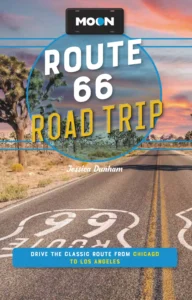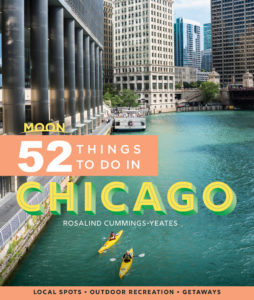Pere Marquette State Park to Alton
Pere Marquette State Park
At the south end of Calhoun County, the Brussels Ferry takes all of two or three minutes to cross the narrow Illinois River, along which Marquette and Joliet returned to Canada after their failure to find a westward-flowing river to the rich lands of Cathay and the Far East. René-Robert Cavelier, Sieur de La Salle, came down the Illinois eight years later in 1681, on the first expedition to specifically target the Mississippi. It was La Salle who claimed the Mississippi territory for his sponsor, King Louis XIV of France, and who went all the way down to the Gulf of Mexico (Marquette and Joliet turned back after the confluence of the Arkansas River).
If you’re equipped for some hiking or biking, Pere Marquette State Park is a short, well-signed, and definitely worthwhile 3-mi (4.8-km) detour upstream from the Brussels Ferry landing. The handsome park lodge (618/786-2331, from $99 for two), built by the Civilian Conservation Corps in the late 1930s, is noted for its 700-ton stone fireplace, massive tree-trunk roof supports, decorative ironwork, and outsize chess set. Cabins and lodge rooms are available for reasonable rates. Expect holiday and fall foliage weekends to be booked up a year in advance; camping (618/786-3323) is also available.
Following an old railroad route for much of the way, the 21.5-mi (34.6-km) Sam Vadalabene Bike Trail between Pere Marquette State Park and Alton is unquestionably the best venue for appreciating the scenery, even for a short walk, for Hwy-100 is a fast divided highway whose drivers don’t appreciate slowpokes.
Grafton and Elsah
North of St. Louis on the Illinois side of the Mississippi, the high-speed section of the GRR between Grafton and Alton is widely considered one of its most scenic stretches. Towering limestone bluffs, their curving faces pocked with caves and overhangs, push the road to the edge of the broad lake formed by Lock and Dam No. 26.
Speeding along Hwy-100 south of Grafton, it’s easy to miss the turnoff for Elsah, but even if you have to turn around and come back, it’s worth it to check out this tiny hamlet tucked away in a cleft in the palisades. Light years away from St. Louis but only a half-hour’s drive away, Elsah is listed in the National Register of Historic Places in its entirety and is an architectural gem, with 19th-century cut-stone and clapboard buildings and narrow lanes reminiscent of some idyllic English country village. Two small B&Bs and the Green Tree Inn (618/374-2821, $135 and up) offer unexpectedly romantic getaways, a taste of New England in southern Illinois.
South of Elsah, before the bluffs give way to grain elevators at Alton, you’ll catch a glimpse of the Piasa Bird (pronounced “PIE-a-saw”) high on the wall of an old roadside quarry. Marquette and other early explorers mention a pair of huge pictographs on the cliff face, representations of the Illini people’s legendary “bird that devours men.” Faded by the 1840s, the original site was destroyed by quarrying. The current 20-by-40-ft (6-by-12-m) replica, based on various eyewitness descriptions, resembles something from the notebook of an adolescent Dungeons & Dragons fan.
Alton
At Alton, (pop. 26,528) 22 mi (32 km) northeast of St. Louis, the riverfront turns decidedly urban. The GRR races along the water, past busy tugboat docks, sulfurous chemical plants, and towering concrete grain elevators, all along a great protective levee under a thicket of high-tension power lines. The main attraction here is the vivid multicolored (and hugely lucrative) Argosy Casino Alton riverboat, formerly the Alton Belle, the first in Illinois when riverboat gambling was made legal in 1991.
Inland from the waterfront, however, Alton is surprisingly peaceful and quiet, its redbrick streets lined by mature trees and a range of modest but well-maintained 19th-century houses. Near P5th and Monument Streets at the south end of town, high on a hill above the riverfront, Alton’s cemetery is dominated by a large column topped by a winged figure—a monument to one of Alton’s most important individuals, the abolitionist newspaper editor Elijah Lovejoy. Widely considered to be the nation’s first martyr to freedom of the press and freedom of speech, Lovejoy, a newspaper publisher and preacher, was killed in Alton in 1837 by a mob of pro-slavery Missourians.
Near the village of Hartford, nine mi (14.5 km) south of Alton, keep an eye out for the signs to the Lewis & Clark State Historical Site, a reconstruction of the winter campsite of the Corps of Discovery in 1803-1804. Recently expanded with a small state-run museum (618/251-5811, Wed.-Sun., free), the site sits opposite the confluence of the Missouri and Mississippi Rivers, which roll together in a muddy tide between swampy wooded banks.
Travel Maps of the Great River Road


















